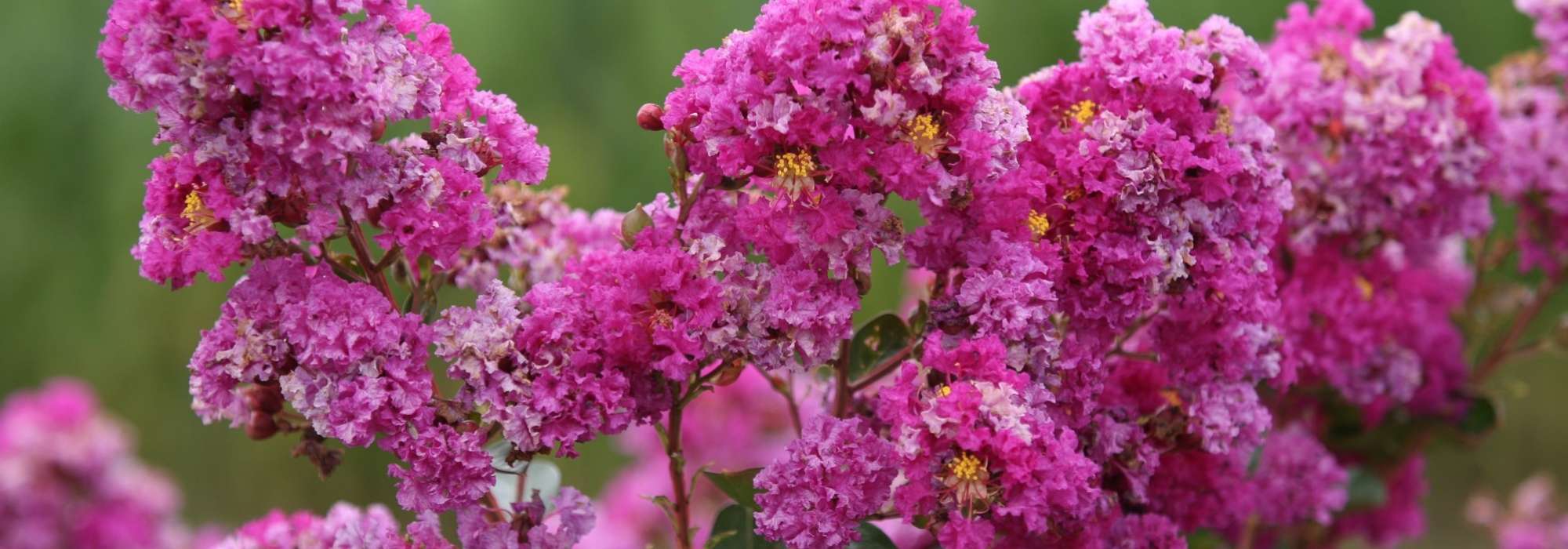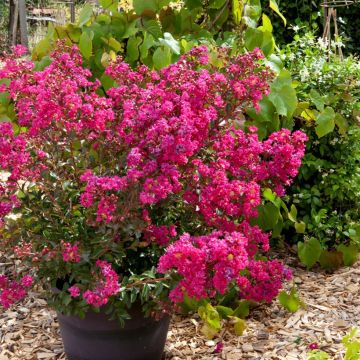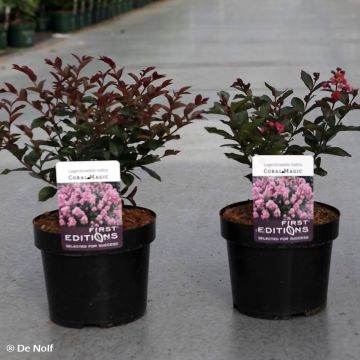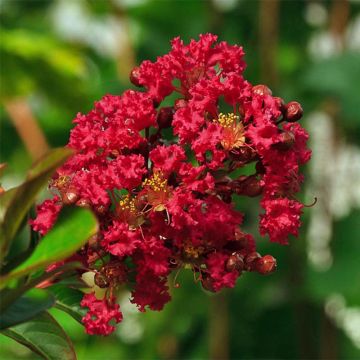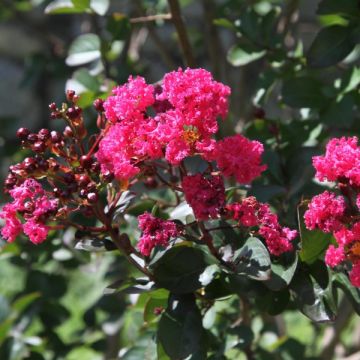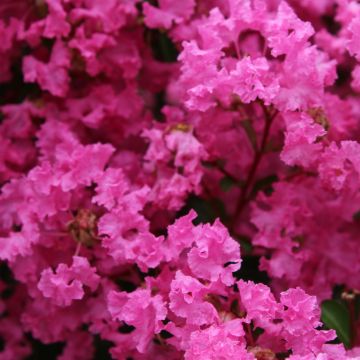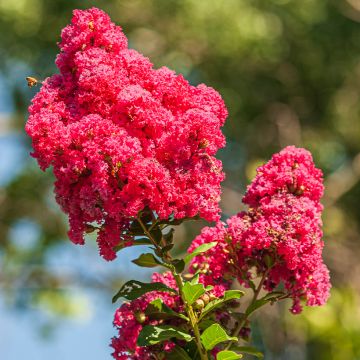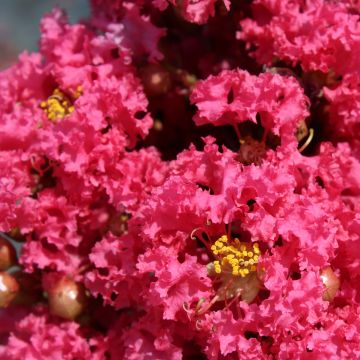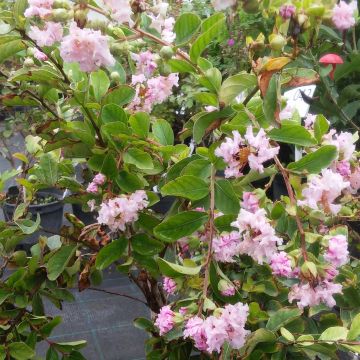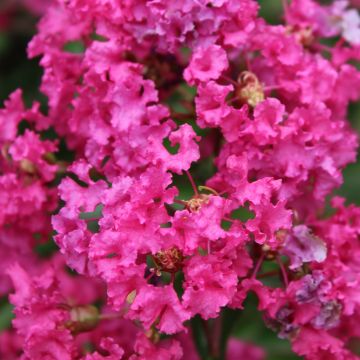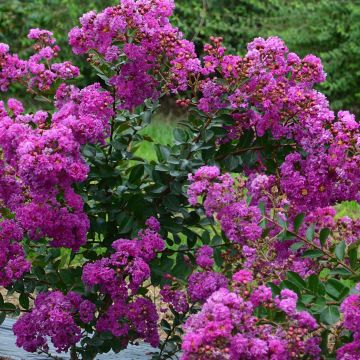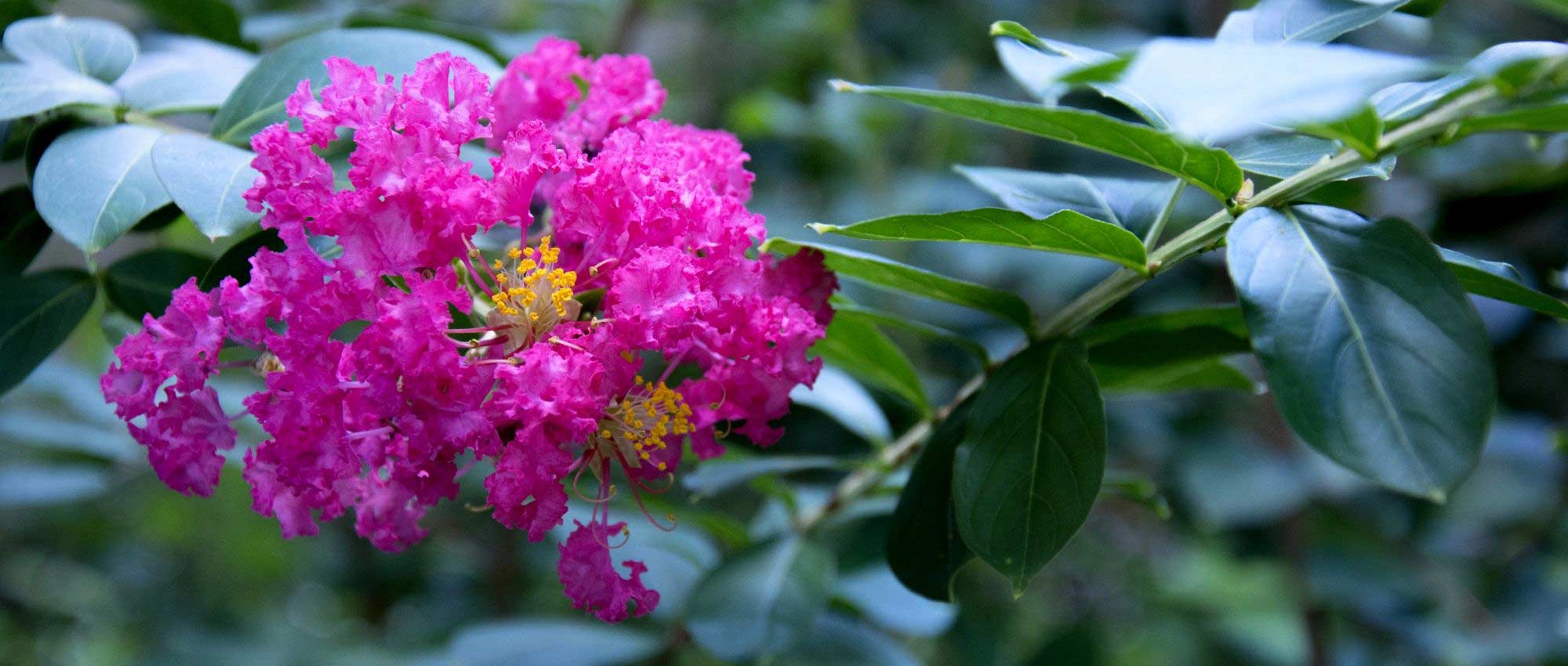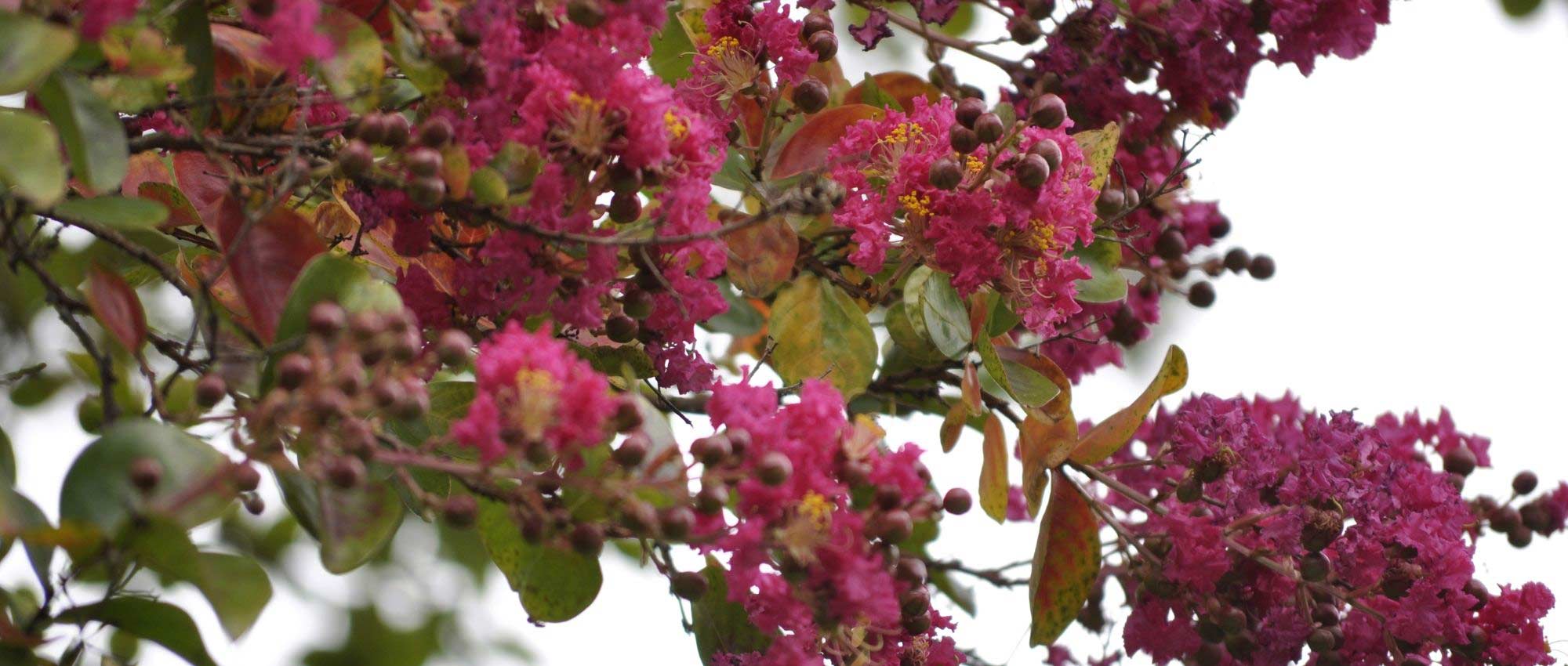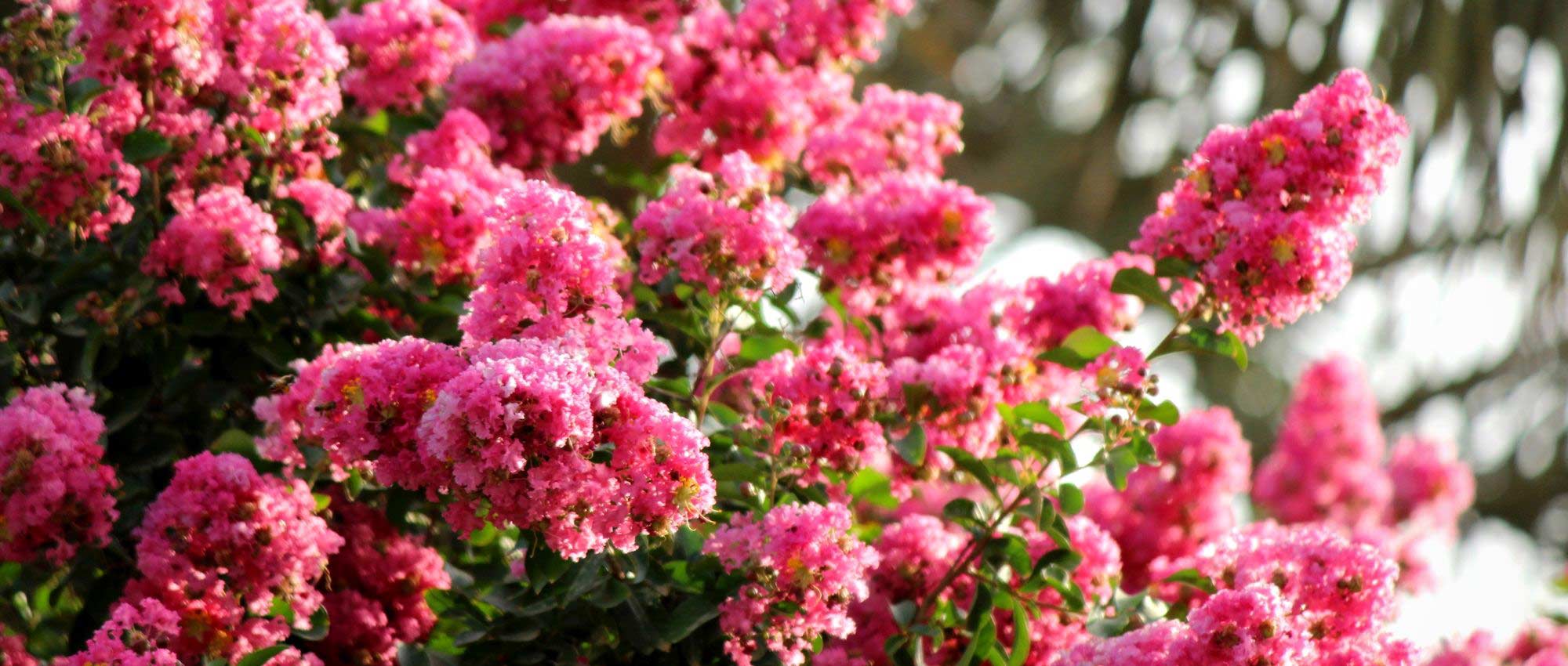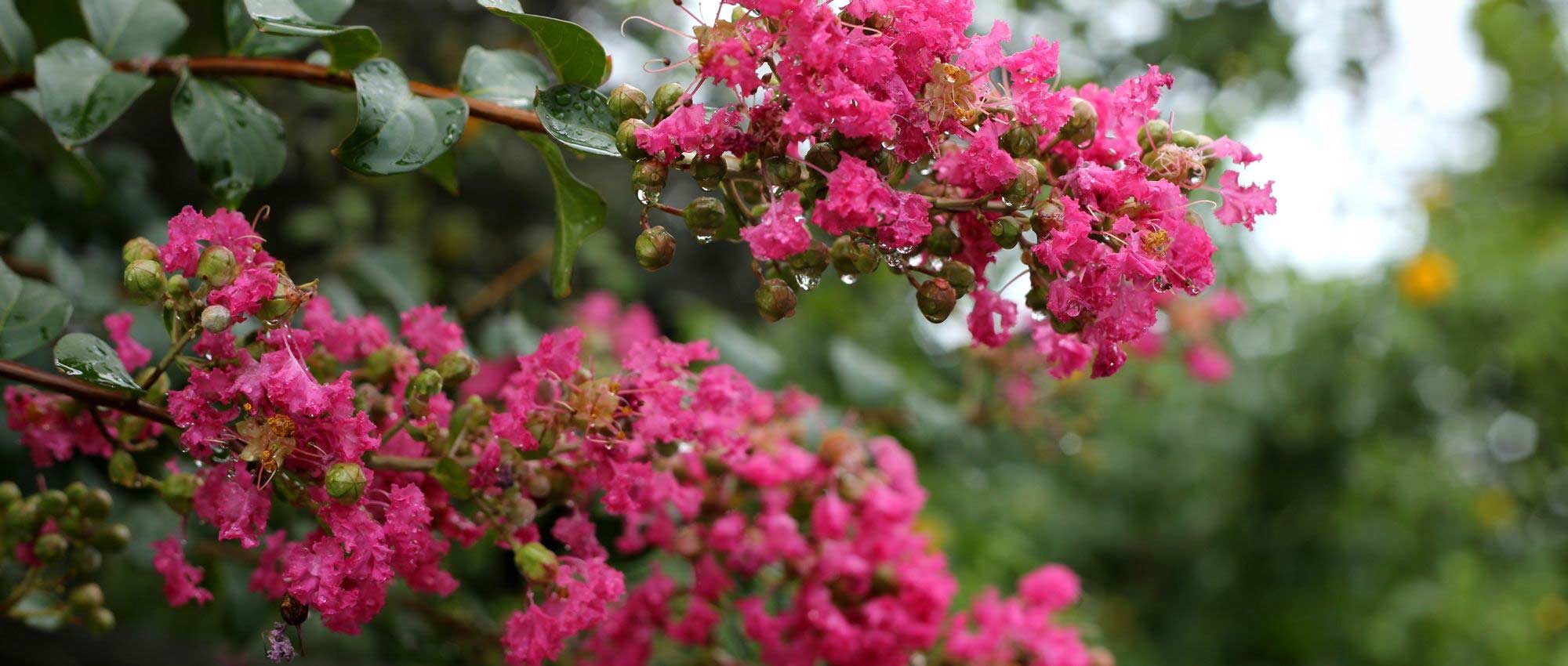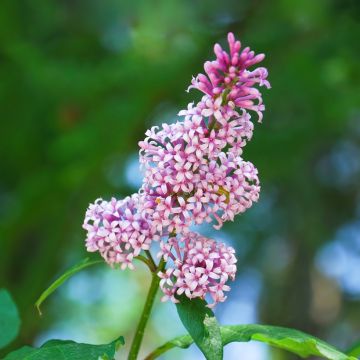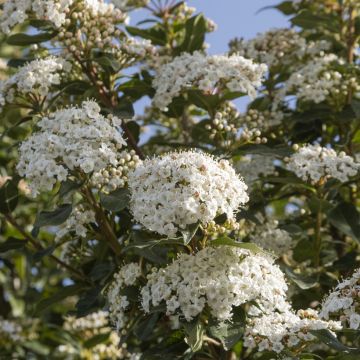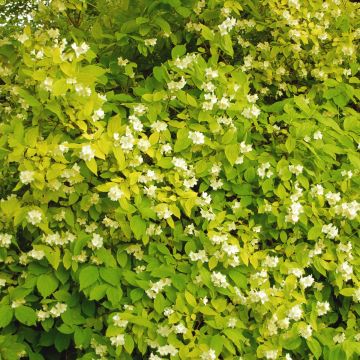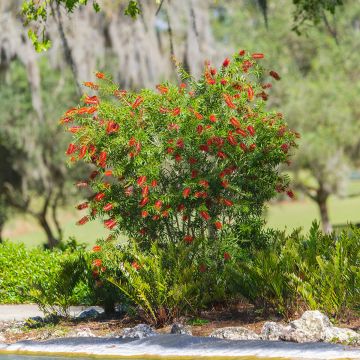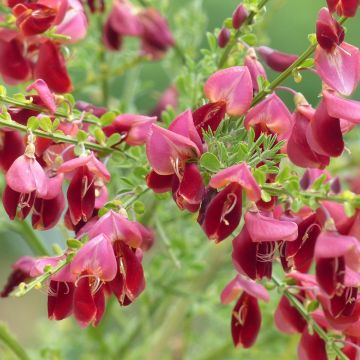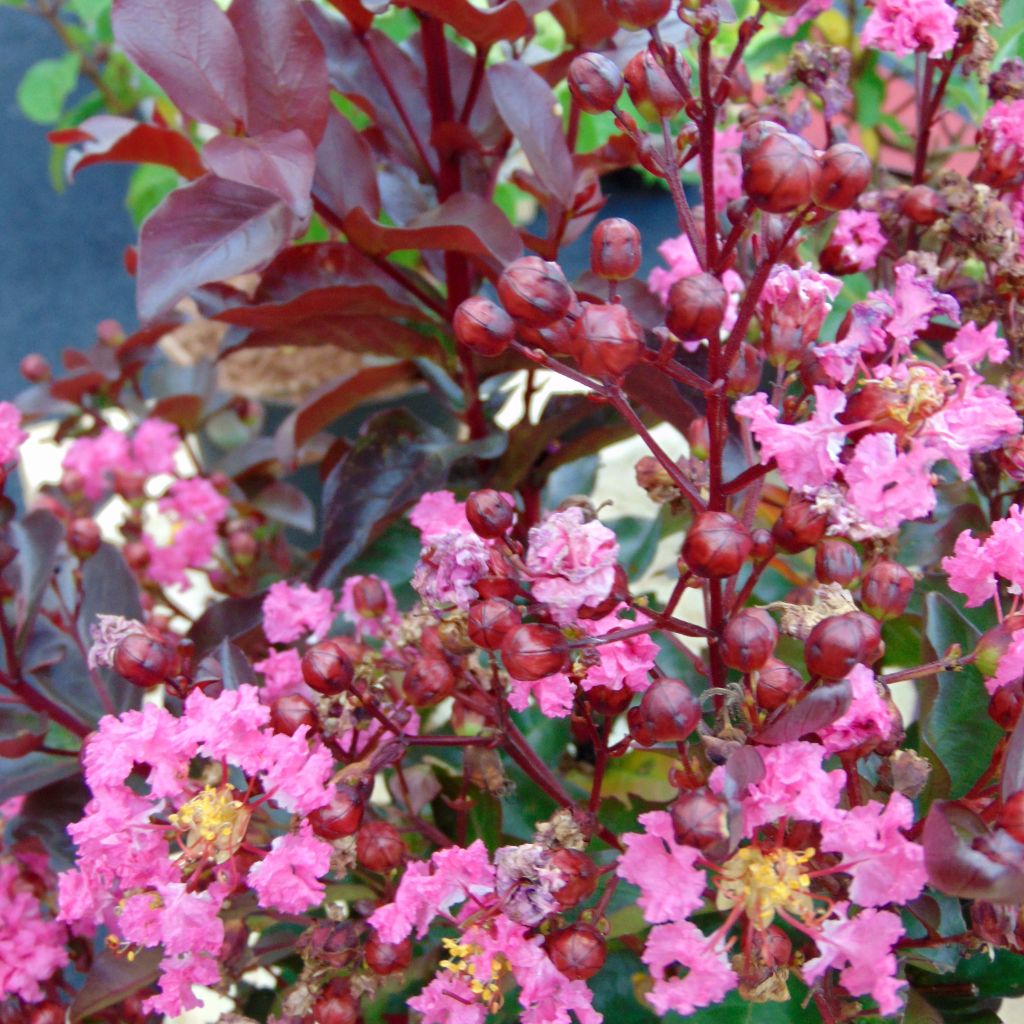

Lagerstroemia indica Rhapsody in Pink - Crape Myrtle
Lagerstroemia indica Rhapsody in Pink - Crape Myrtle
Lagerstroemia indica Rhapsody in PINK
Crape Myrtle, Crepe Myrtle, Indian Lilac
The plant arrived in very good condition. I planted it quickly despite the ongoing drought, and it shows no signs of weakness so far (15 days after planting, today). The only downside: the required special delivery and the delivery person specifying the day but not the time of delivery—I waited all day, and it only arrived at 3 PM. Perhaps they should at least mention whether the delivery will be in the morning or afternoon. But this is likely the trade-off for the convenience of having it delivered and not having to go out to get the product you want.
Kevin, 26/06/2025
Special offer!
Receive a €20 voucher for any order over €90 (excluding delivery costs, credit notes, and plastic-free options)!
1- Add your favorite plants to your cart.
2- Once you have reached €90, confirm your order (you can even choose the delivery date!).
3- As soon as your order is shipped, you will receive an email containing your voucher code, valid for 3 months (90 days).
Your voucher is unique and can only be used once, for any order with a minimum value of €20, excluding delivery costs.
Can be combined with other current offers, non-divisible and non-refundable.
Home or relay delivery (depending on size and destination)
Schedule delivery date,
and select date in basket
This plant carries a 24 months recovery warranty
More information
We guarantee the quality of our plants for a full growing cycle, and will replace at our expense any plant that fails to recover under normal climatic and planting conditions.

Would this plant suit my garden?
Set up your Plantfit profile →
Description
Lagerstroemia indica 'Rhapsody in Pink' is a fairly recent and truly delightful variety of Indian Lilac. Not very tall but robust and resistant to powdery mildew, this bush, which can become a small tree, produces wonderful clusters of frothy flowers in a soft and bright pink colour, among young leaves coloured purple to burgundy, until late summer. The Summer Lilacs are also appreciated for their smooth bark, often richly coloured and their beautiful autumn colours. These bushes like warmth but appreciate some coolness at their feet in summer to support their flowering. This one, easy to grow in many regions, will make a sensation as a standalone plant in a small garden or in a large pot on the terrace.
The Lagerstroemia indica Rhapsody in Pink, discovered in a garden in Oklahoma, USA, is a flowering plant that requires less sun and is resistant to powdery mildew.
Rhapsody in Pink belongs to the lythraceae family, just like the Lagerstroemia indica originating in China, from which it is derived. This plant has a bushy habit from the base, with a rounded, slightly spreading crown. It will reach an average height of 2m (6ft 7in) at maturity, with a diameter of 1m (3ft 4in). Its growth is quite fast. It usually starts flowering in August and continues until September-October, depending on the climate. The inflorescences, in branched clusters, are composed of numerous small flowers borne by fine pedicels. Each flower has five petals with a very undulate edge, whose texture is reminiscent of crepe. They are gathered in large, dense panicles at the ends of the current year's branches.
In Rhapsody in Pink, the peduncles, pedicels and flower buds are almost mahogany and shiny, then they bloom widely in pale pink flowers that fade almost to white before withering. The deciduous and leathery leaves, develop throughout the season, with young purple leaves accompanying the pink flowering. Mature leaves are shiny dark green and often take on pretty orange or coppery hues in autumn, more intense in cool climates. Finally, its bark is truly beautiful, smooth, striped beige with grey, reddish-brown, and peeling off in coloured patches (cinnamon, muted red, old rose, cream).
It is as a standalone plant, near the house, that you can fully enjoy its generosity. It will look good in a shrub border, a flowering hedge, or emerging from a mound of perennials. Create a border like a bouquet, with Nepeta, Salvia sclarea or jamensis, Aster laevis. In autumn, it accompanies the smoke bushes and deciduous euonymus, as colourful as it is. In a large pot on the terrace, it puts on a show while summer blooms fade. We can imagine a simple vegetative tapestry as a ground cover to highlight the 'Rhapsody in Pink' Lilac: a weaving of thymes (Thymus hirsutus, longicaulis, nitens), oregano, and silver baskets will dress the base of its trunk, emphasize the beauty of its bark and reflect its beautiful flowering.
Note: We would like to point out that this tree produces fruits with narcotic effects if ingested.
The creation of varieties in Indian Lilacs has long been a French specialty, with the two main hybridizers being located in Périgord and Quercy. Other enthusiasts have embarked on the adventure, like Christian Gaurrat and Antoine Scrive in the Landes.
Lagerstroemia indica Rhapsody in Pink - Crape Myrtle in pictures
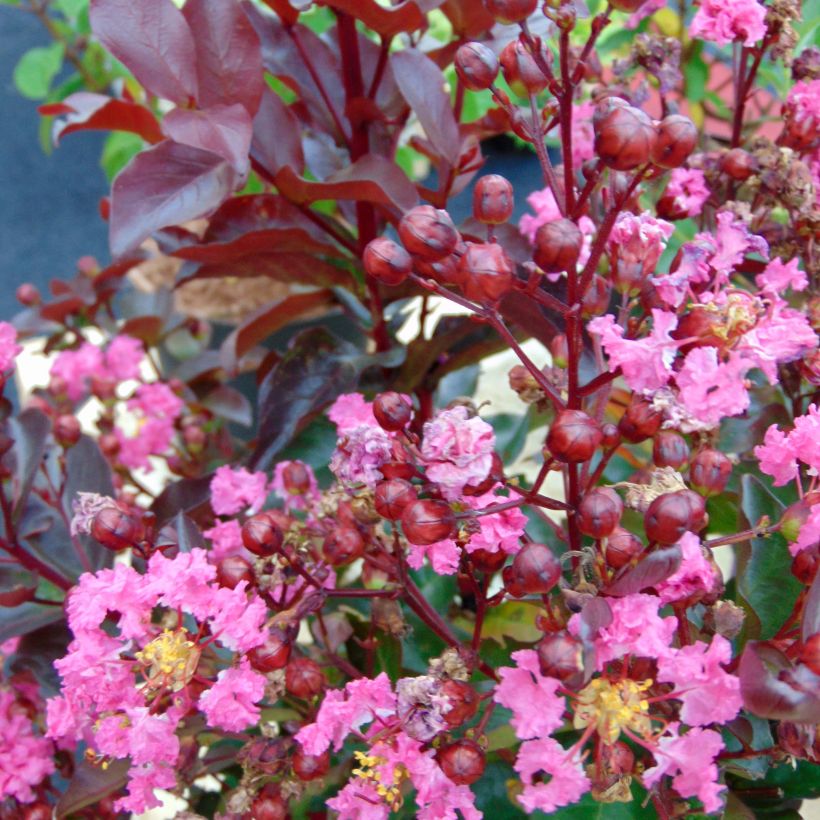

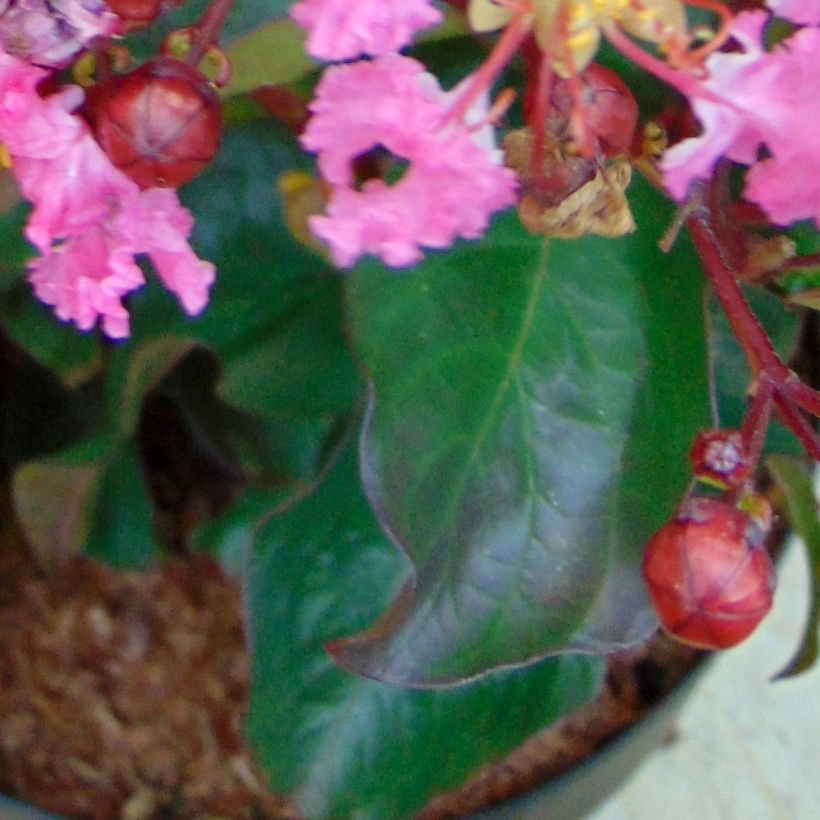

Plant habit
Flowering
Foliage
Botanical data
Lagerstroemia
indica
Rhapsody in PINK
Lythraceae
Crape Myrtle, Crepe Myrtle, Indian Lilac
Cultivar or hybrid
Other Lagerstroemia - Crape Myrtle
View all →Planting and care
We recommend planting Lagerstroemia indica 'Rhapsody in Pink' in spring, when the risk of frost is no longer a concern, in a very sunny and sheltered location, in a rich soil, preferably moist, well-drained, and slightly acidic, neutral or slightly non-limestone. It will appreciate the addition of compost and a thick layer of dead leaves, especially during the first two winters in cold regions. It is necessary to prune the flowering branches very short in February-March, leaving only 4 to 6 buds to balance its habit and stimulate the growth of future flower-bearing branches. If necessary, remove weak twigs and poorly positioned branches.
Planting period
Intended location
Care
Planting & care advice
-
, onOrder confirmed
Reply from on Promesse de fleurs
Similar products
Haven't found what you were looking for?
Hardiness is the lowest winter temperature a plant can endure without suffering serious damage or even dying. However, hardiness is affected by location (a sheltered area, such as a patio), protection (winter cover) and soil type (hardiness is improved by well-drained soil).

Photo Sharing Terms & Conditions
In order to encourage gardeners to interact and share their experiences, Promesse de fleurs offers various media enabling content to be uploaded onto its Site - in particular via the ‘Photo sharing’ module.
The User agrees to refrain from:
- Posting any content that is illegal, prejudicial, insulting, racist, inciteful to hatred, revisionist, contrary to public decency, that infringes on privacy or on the privacy rights of third parties, in particular the publicity rights of persons and goods, intellectual property rights, or the right to privacy.
- Submitting content on behalf of a third party;
- Impersonate the identity of a third party and/or publish any personal information about a third party;
In general, the User undertakes to refrain from any unethical behaviour.
All Content (in particular text, comments, files, images, photos, videos, creative works, etc.), which may be subject to property or intellectual property rights, image or other private rights, shall remain the property of the User, subject to the limited rights granted by the terms of the licence granted by Promesse de fleurs as stated below. Users are at liberty to publish or not to publish such Content on the Site, notably via the ‘Photo Sharing’ facility, and accept that this Content shall be made public and freely accessible, notably on the Internet.
Users further acknowledge, undertake to have ,and guarantee that they hold all necessary rights and permissions to publish such material on the Site, in particular with regard to the legislation in force pertaining to any privacy, property, intellectual property, image, or contractual rights, or rights of any other nature. By publishing such Content on the Site, Users acknowledge accepting full liability as publishers of the Content within the meaning of the law, and grant Promesse de fleurs, free of charge, an inclusive, worldwide licence for the said Content for the entire duration of its publication, including all reproduction, representation, up/downloading, displaying, performing, transmission, and storage rights.
Users also grant permission for their name to be linked to the Content and accept that this link may not always be made available.
By engaging in posting material, Users consent to their Content becoming automatically accessible on the Internet, in particular on other sites and/or blogs and/or web pages of the Promesse de fleurs site, including in particular social pages and the Promesse de fleurs catalogue.
Users may secure the removal of entrusted content free of charge by issuing a simple request via our contact form.
The flowering period indicated on our website applies to countries and regions located in USDA zone 8 (France, the United Kingdom, Ireland, the Netherlands, etc.)
It will vary according to where you live:
- In zones 9 to 10 (Italy, Spain, Greece, etc.), flowering will occur about 2 to 4 weeks earlier.
- In zones 6 to 7 (Germany, Poland, Slovenia, and lower mountainous regions), flowering will be delayed by 2 to 3 weeks.
- In zone 5 (Central Europe, Scandinavia), blooming will be delayed by 3 to 5 weeks.
In temperate climates, pruning of spring-flowering shrubs (forsythia, spireas, etc.) should be done just after flowering.
Pruning of summer-flowering shrubs (Indian Lilac, Perovskia, etc.) can be done in winter or spring.
In cold regions as well as with frost-sensitive plants, avoid pruning too early when severe frosts may still occur.
The planting period indicated on our website applies to countries and regions located in USDA zone 8 (France, United Kingdom, Ireland, Netherlands).
It will vary according to where you live:
- In Mediterranean zones (Marseille, Madrid, Milan, etc.), autumn and winter are the best planting periods.
- In continental zones (Strasbourg, Munich, Vienna, etc.), delay planting by 2 to 3 weeks in spring and bring it forward by 2 to 4 weeks in autumn.
- In mountainous regions (the Alps, Pyrenees, Carpathians, etc.), it is best to plant in late spring (May-June) or late summer (August-September).
The harvesting period indicated on our website applies to countries and regions in USDA zone 8 (France, England, Ireland, the Netherlands).
In colder areas (Scandinavia, Poland, Austria...) fruit and vegetable harvests are likely to be delayed by 3-4 weeks.
In warmer areas (Italy, Spain, Greece, etc.), harvesting will probably take place earlier, depending on weather conditions.
The sowing periods indicated on our website apply to countries and regions within USDA Zone 8 (France, UK, Ireland, Netherlands).
In colder areas (Scandinavia, Poland, Austria...), delay any outdoor sowing by 3-4 weeks, or sow under glass.
In warmer climes (Italy, Spain, Greece, etc.), bring outdoor sowing forward by a few weeks.






























